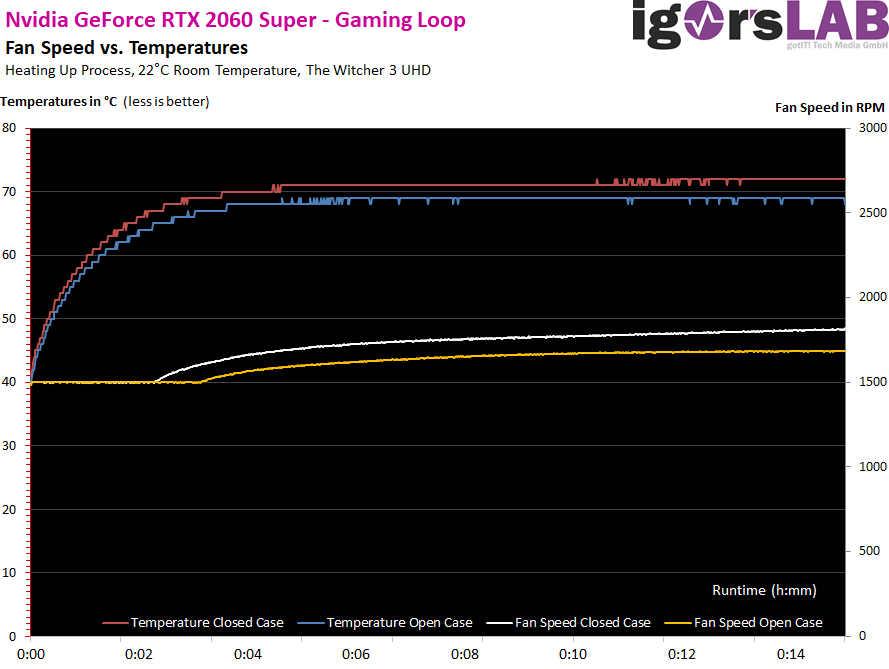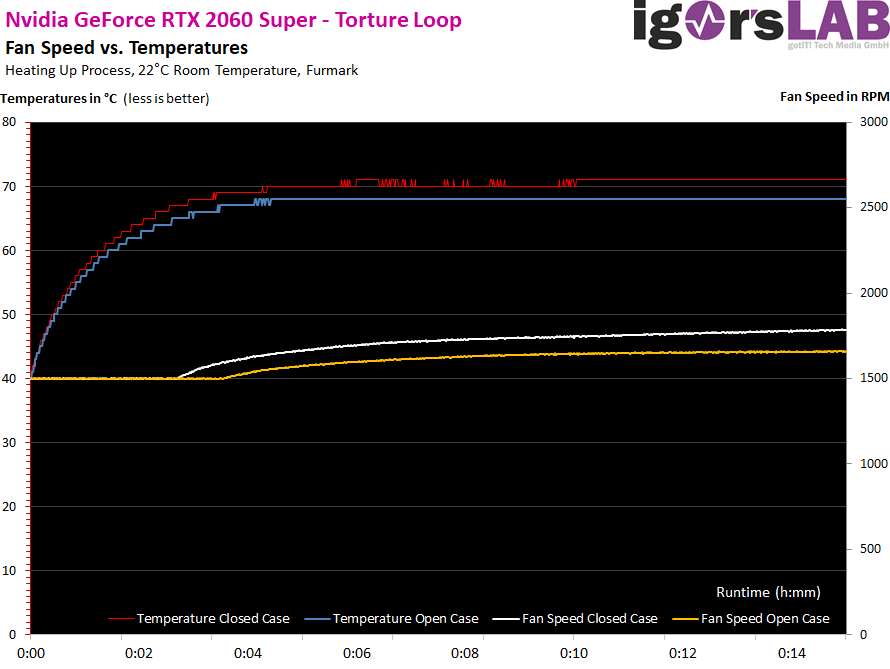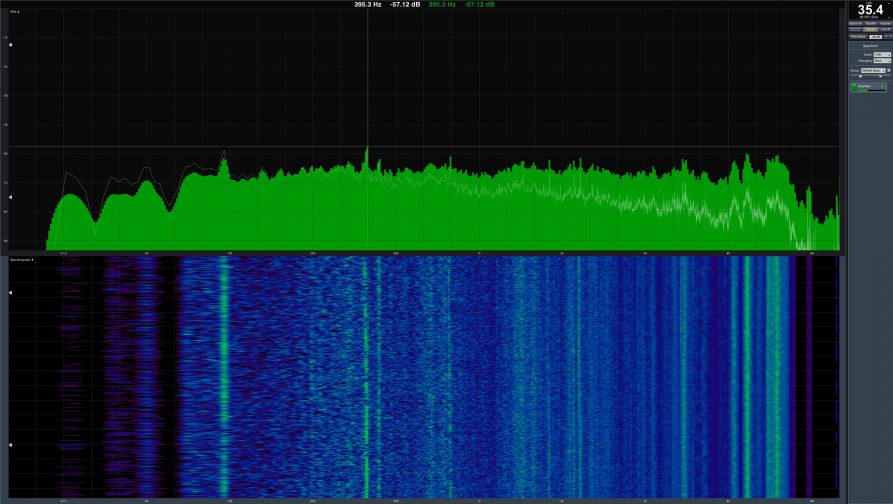There is no fan stop, the fans always rotate, even in the idle. Are there still approx. 1500 rpm, it rises to more than 1800 rpm, depending on the housing and airflow. That's not much, and it's also quite quiet.

By the way, this is no different with the stress test.

Let's look at the measured values again in direct comparison to the Founders Edition as a tabular listing:
| RTX 2060 Super | RTX 2070 FE | |
|---|---|---|
| Fan speeds Open Benchtable Maximum | 1756 rpm (Gaming, Peak) | 1635 rpm (Gaming, Peak) |
| Fan speeds Open Benchtable Average | 1740 rpm (warmed up) | 1605 rpm (warmed up) |
| Fan Speeds Closed Case Maximum | 1820 rpm (Gaming, Peak) | 1759 rpm (Gaming, Peak) |
| Fan Speeds Closed Case Average | 1800 rpm (warmed up) | 1721 (warmed up) |
| Noise Emission (Air) Average | 35.4 dB(A), Closed Case (Peak) | 39.1 dB(A), Closed Case |
| Noise Emission (Air) Idle | 31 dB(A) | 31.3 dB(A) |
| Sound characteristic / hearing impression | quiet, low-frequency peak | rather noisy, hardly lower-frequency shares |
| Coil-feathers/electric noises | low, only for very high FPS numbers and for load changes | low, only for very high FPS numbers and for load changes |
Sound Spectrum
The measured 35.4 dB(A) are based on the measured 1800 rpm in the closed housing. I applied the same gaming load to the open set-up in the measuring room, but the fans were set to approx. 1800 rpm to be able to adjust this value exactly. The result is audibly below the level of the GeForce 2070 FE. The map is really quiet, almost whisper-quiet.
The sound backdrop is present and you can also perceive and measure light (low-frequency) engine noise for light noise (see peak on the spectral analysis above). The noise comes from the turbulences of the rotor blades and is defined by a rather oscillating noise of the two fans. You could throttle the fans even further by setting the target temperature to 75°C. But it doesn't have to be. The chirping of the coils is rather a slight bounce, but hardly perceptible.
- 1 - Einführung und Übersicht
- 2 - Tear Down: Platine und Kühler
- 3 - The Division 2
- 4 - F1 2019
- 5 - Far Cry 5
- 6 - GTA V
- 7 - Metro Exodus
- 8 - Shadow of the Tomb Raider
- 9 - Total War: Three Kingdoms
- 10 - World War Z
- 11 - Leistungsaufnahme im Detail
- 12 - Temperatur, Takt, Infrarot
- 13 - Lüfter und Lautstärke
- 14 - Zusammenfassung


































Kommentieren